Yamaha UDWL01 USB WIRELESS LAN ADAPTOR User Manual Short Term Confidential 2
Yamaha Corporation USB WIRELESS LAN ADAPTOR Short Term Confidential 2
Yamaha >
Contents
- 1. (Short-Term Confidential) User Manual
- 2. (Short-Term Confidential) User Manual-2
- 3. (Short-Term Confidential) User Manual-3
- 4. User Manual
(Short-Term Confidential) User Manual-2
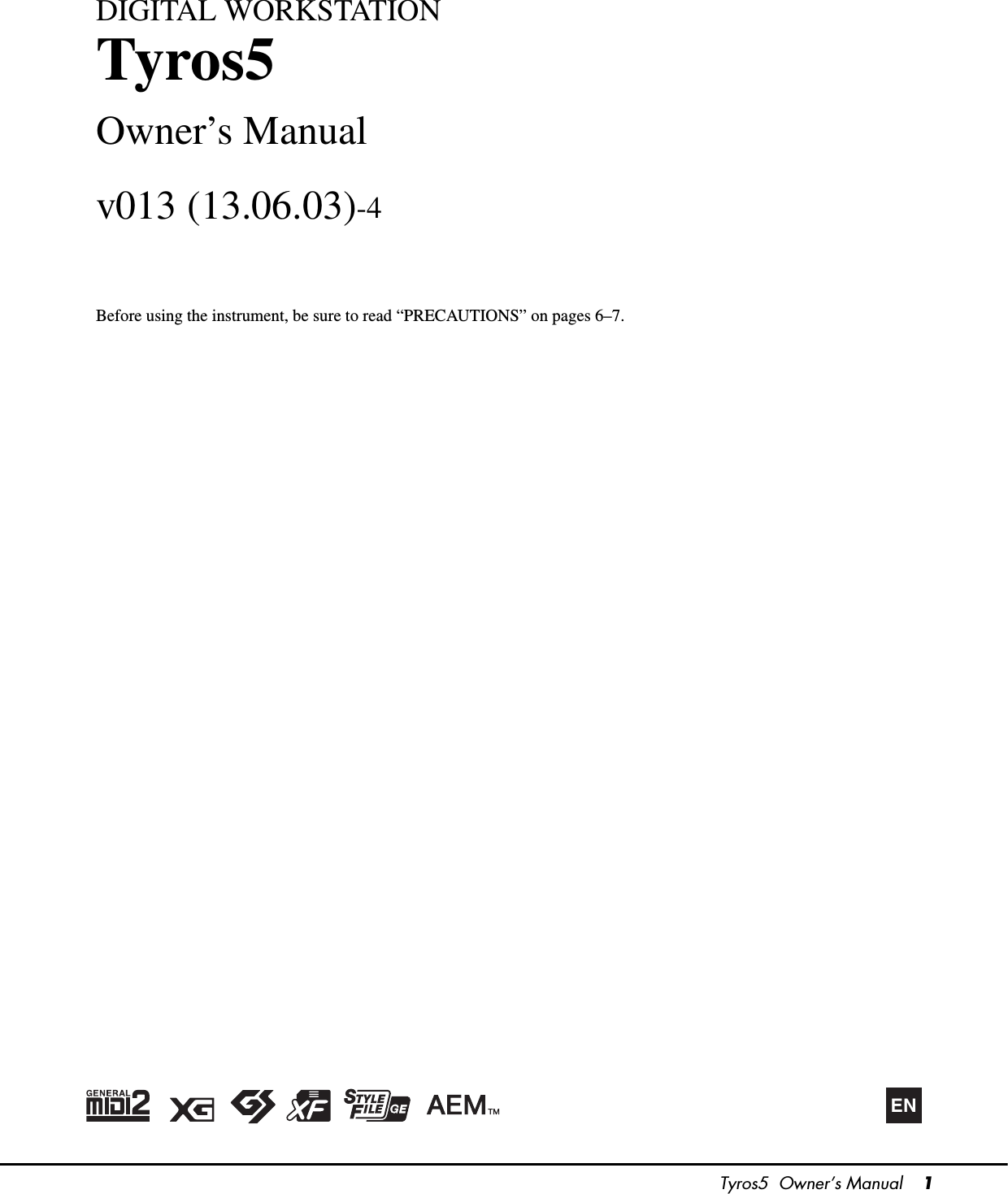
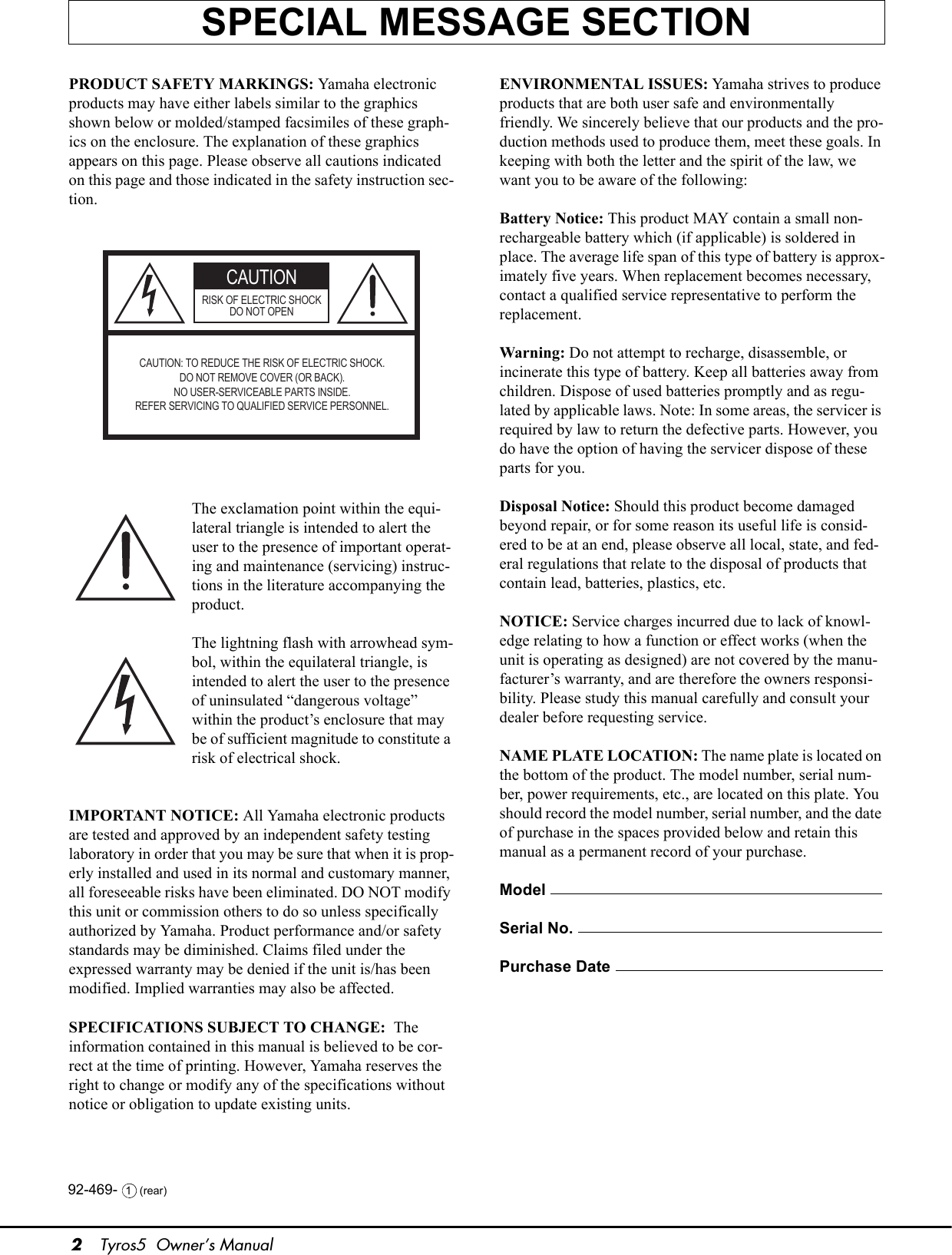
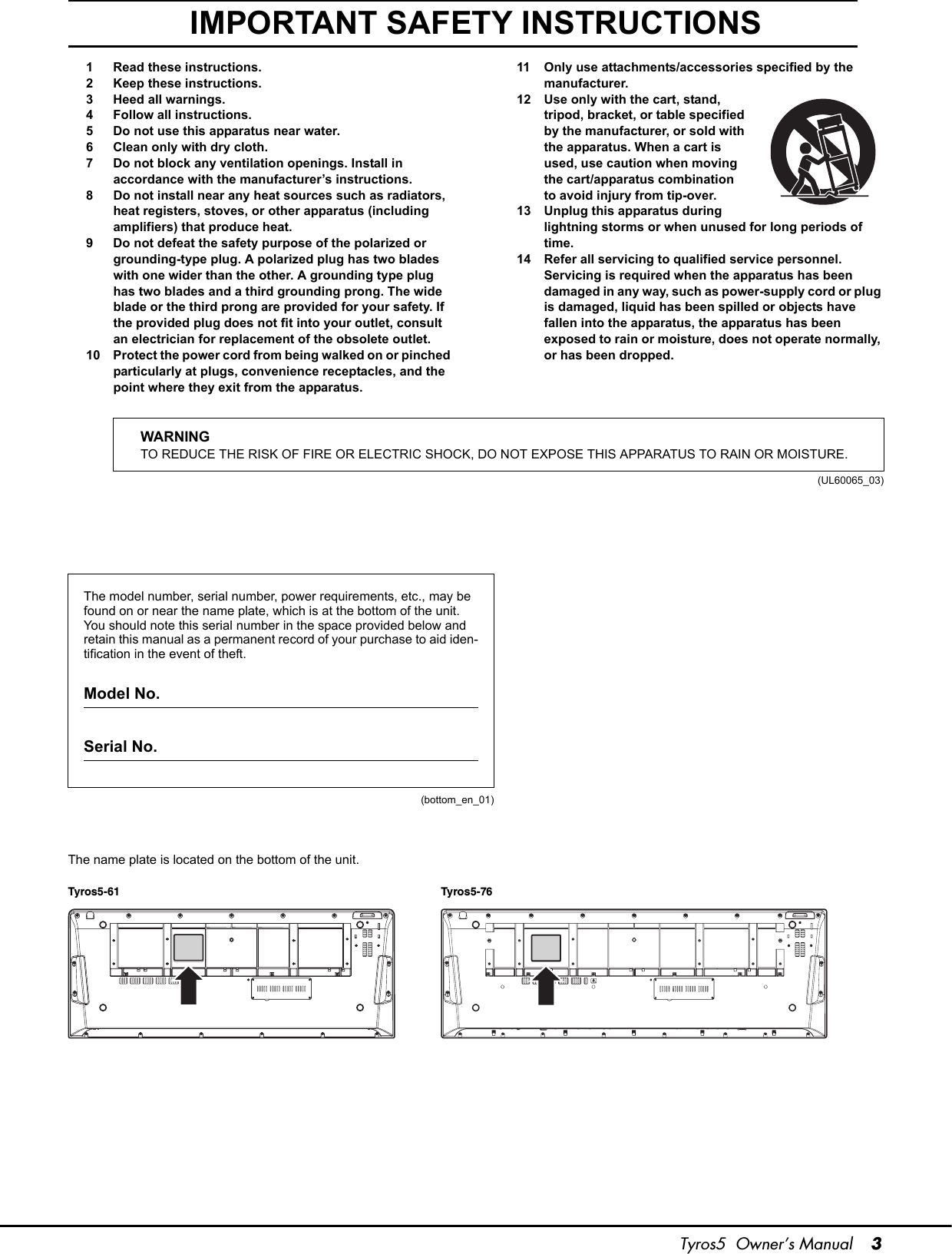
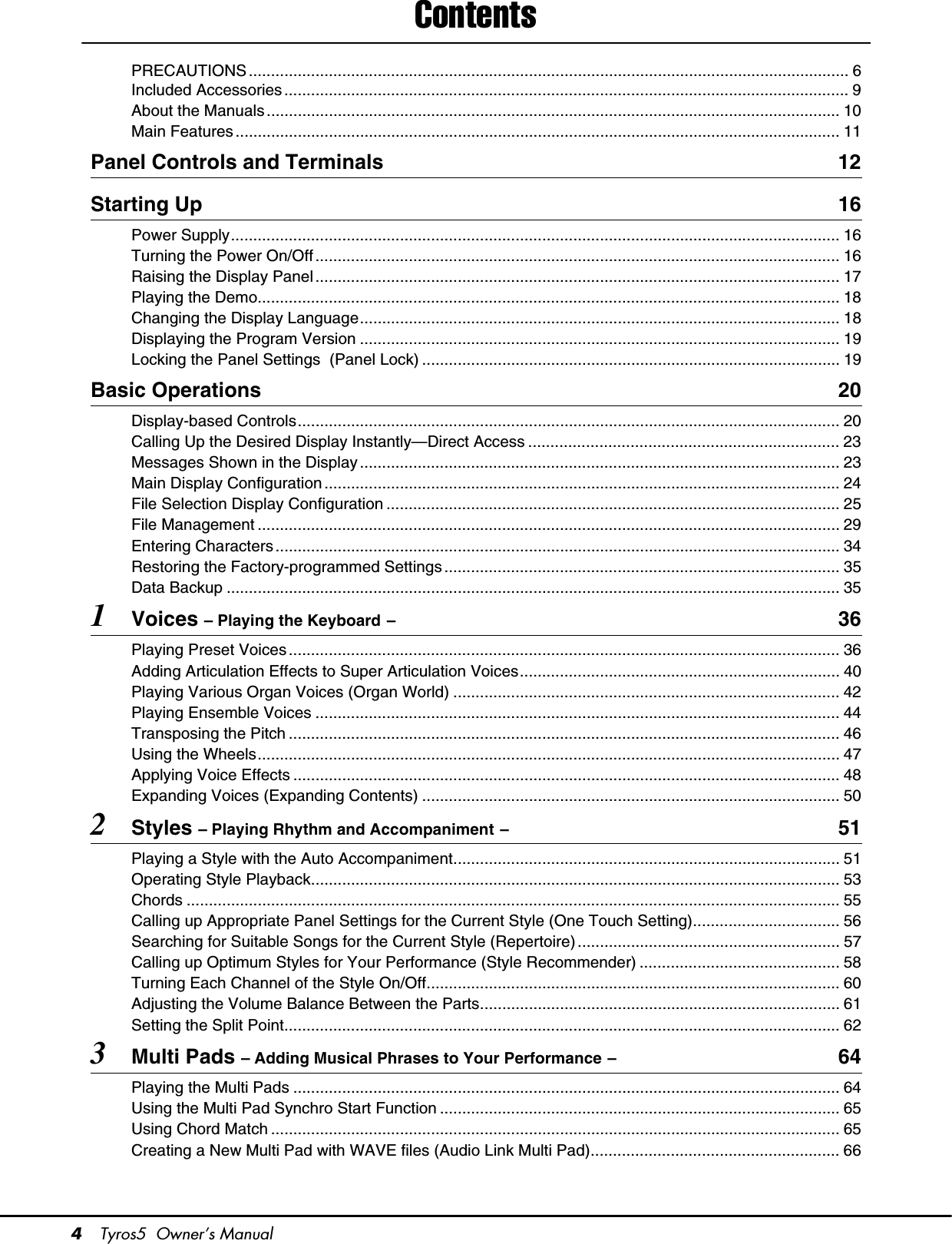
![Tyros5 Owner’s Manual 5Contents4Songs – Recording Your Performances as a MIDI Song –68Basic Procedure for Recording .............................................................................................................. 68Playback of Songs ................................................................................................................................. 71Displaying Music Notation (Score)......................................................................................................... 73Displaying Lyrics (Text).......................................................................................................................... 73Using Song Position Markers................................................................................................................. 74Turning Each Channel of the Song On/Off ............................................................................................ 755Audio Recorder/Player – Recording and Playing Audio Files –76Recording Your Performance as Audio ................................................................................................. 76Playing Back Audio Files ....................................................................................................................... 78Playback-related Operations.................................................................................................................. 796Music Finder – Calling Up Ideal Panel Settings for Your Performance –81Selecting the Desired Record (Panel Settings)...................................................................................... 82Searching for Records (Panel Settings)................................................................................................. 83Registering a MIDI Song, Audio Song or Style to a Record .................................................................. 847Registration Memory – Saving and Recalling Custom Panel Setups –85Registering Your Panel Setups.............................................................................................................. 85Saving the Registration Memory as a Bank file ..................................................................................... 868Microphone – Adding Harmony Vocals and Synth Vocoder to Your Singing –88Connecting a Microphone ...................................................................................................................... 88Using Vocal Harmony ............................................................................................................................ 89Using Synth Vocoder ............................................................................................................................. 919Mixing Console – Editing the Volume and Tonal Balance –92Basic Procedure..................................................................................................................................... 92Master Compressor ............................................................................................................................... 9410 Utility – Making Global Settings –96Basic Procedure..................................................................................................................................... 9611 Connections – Using Your Instrument with Other Devices –97Connecting a Microphone ([MIC INPUT] jack)....................................................................................... 97Connecting Audio Devices (LINE OUT jacks, AUX IN jacks) ................................................................ 97Connecting an External Monitor ([RGB OUT] terminal) ......................................................................... 99Connecting Footswitches/Foot Controllers (ASSIGNABLE FOOT PEDAL jacks) ............................... 100Connecting USB Devices ([USB TO DEVICE] terminal)...................................................................... 101Connecting to an iPhone/iPad ([USB TO DEVICE], [USB TO HOST] and MIDI terminals)................. 102Connecting to a Computer ([USB TO HOST] terminal) ....................................................................... 103Connecting External MIDI Devices (MIDI terminals)............................................................................ 105Appendix 106Installing the Optional Speakers .......................................................................................................... 106Installing the Optional Flash Memory Expansion Module .................................................................... 108Direct Access Chart ............................................................................................................................. 110Panel Button Chart............................................................................................................................... 112Troubleshooting ................................................................................................................................... 115Specifications....................................................................................................................................... 118Index .................................................................................................................................................... 119](https://usermanual.wiki/Yamaha/UDWL01.Short-Term-Confidential-User-Manual-2/User-Guide-2037897-Page-5.png)
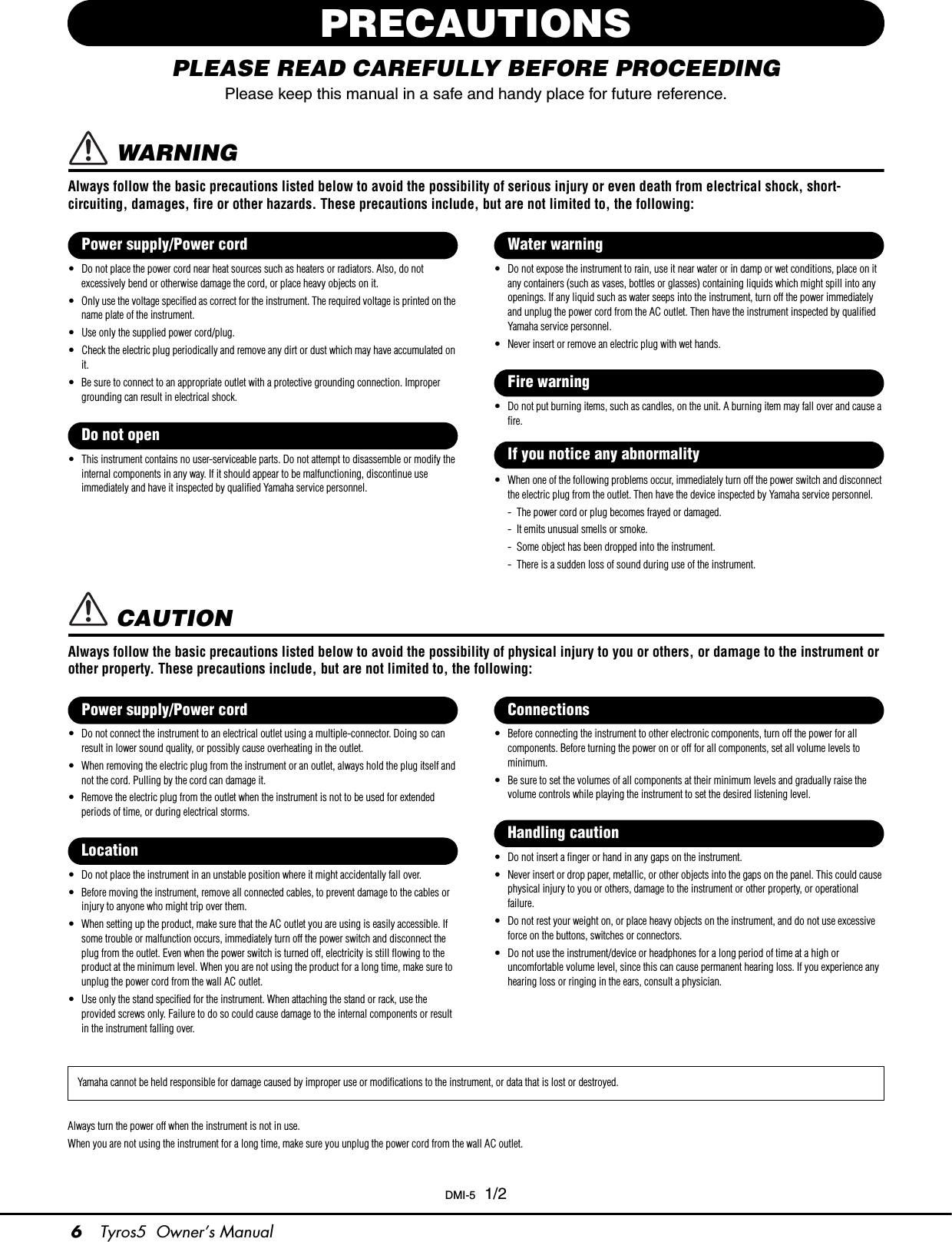
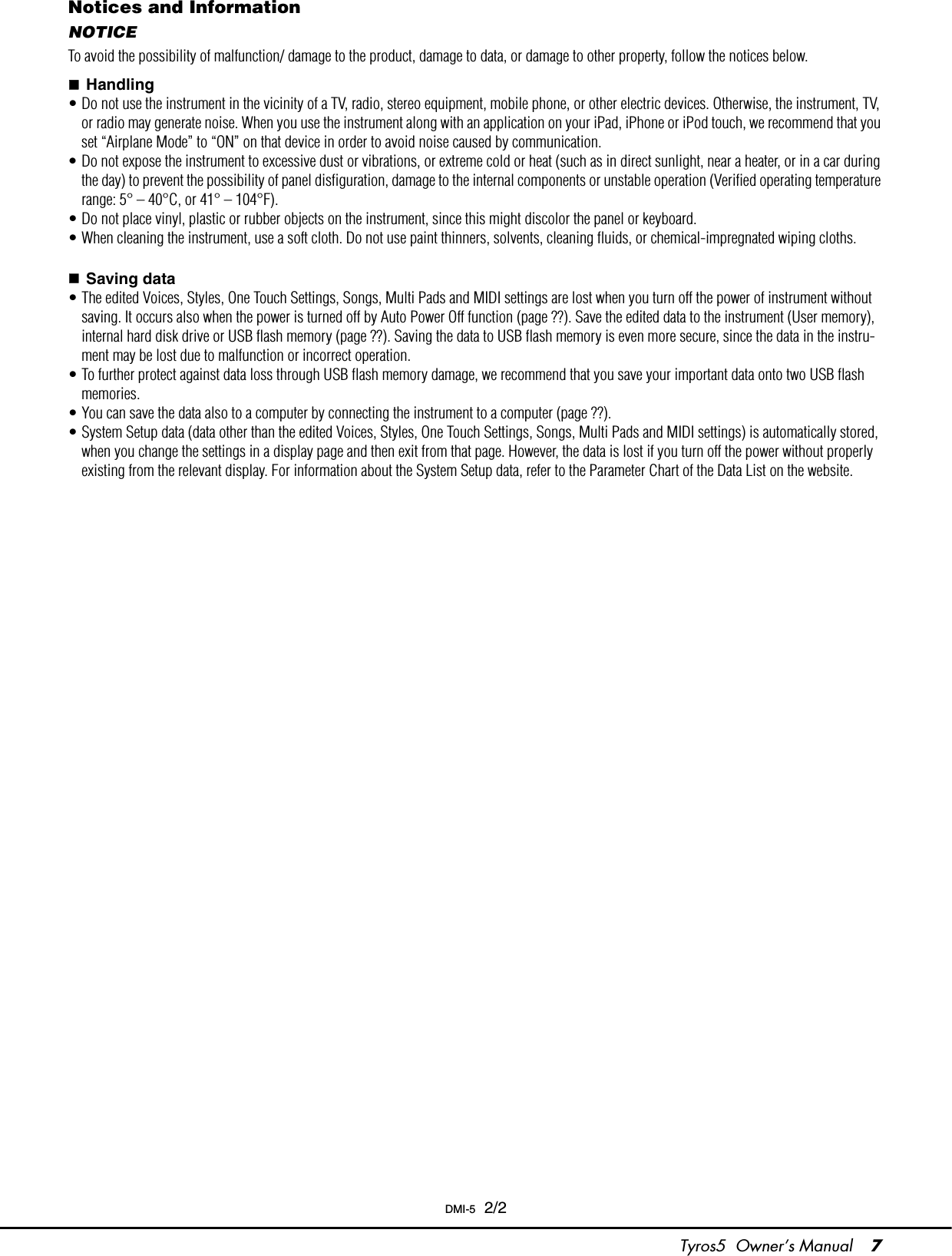
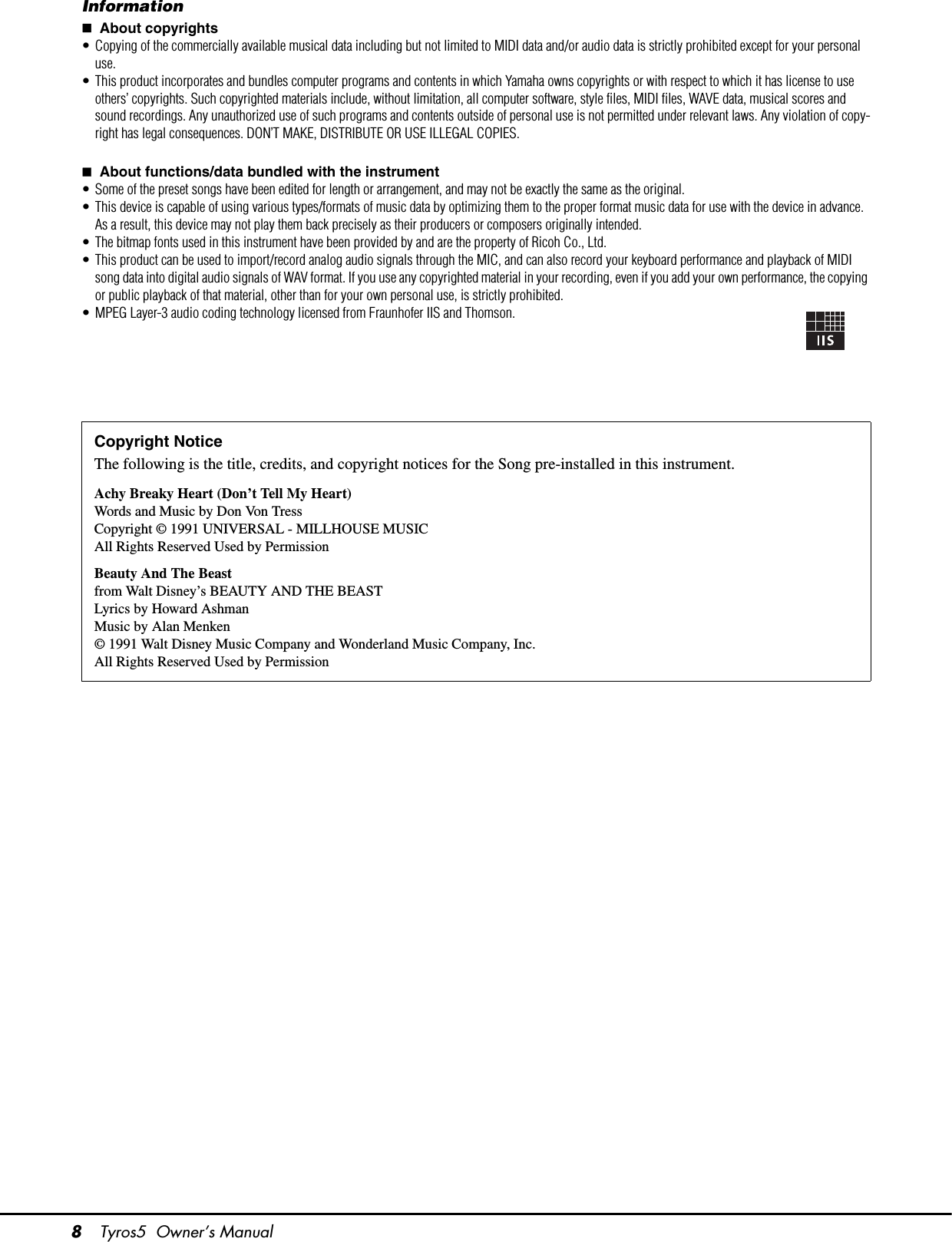
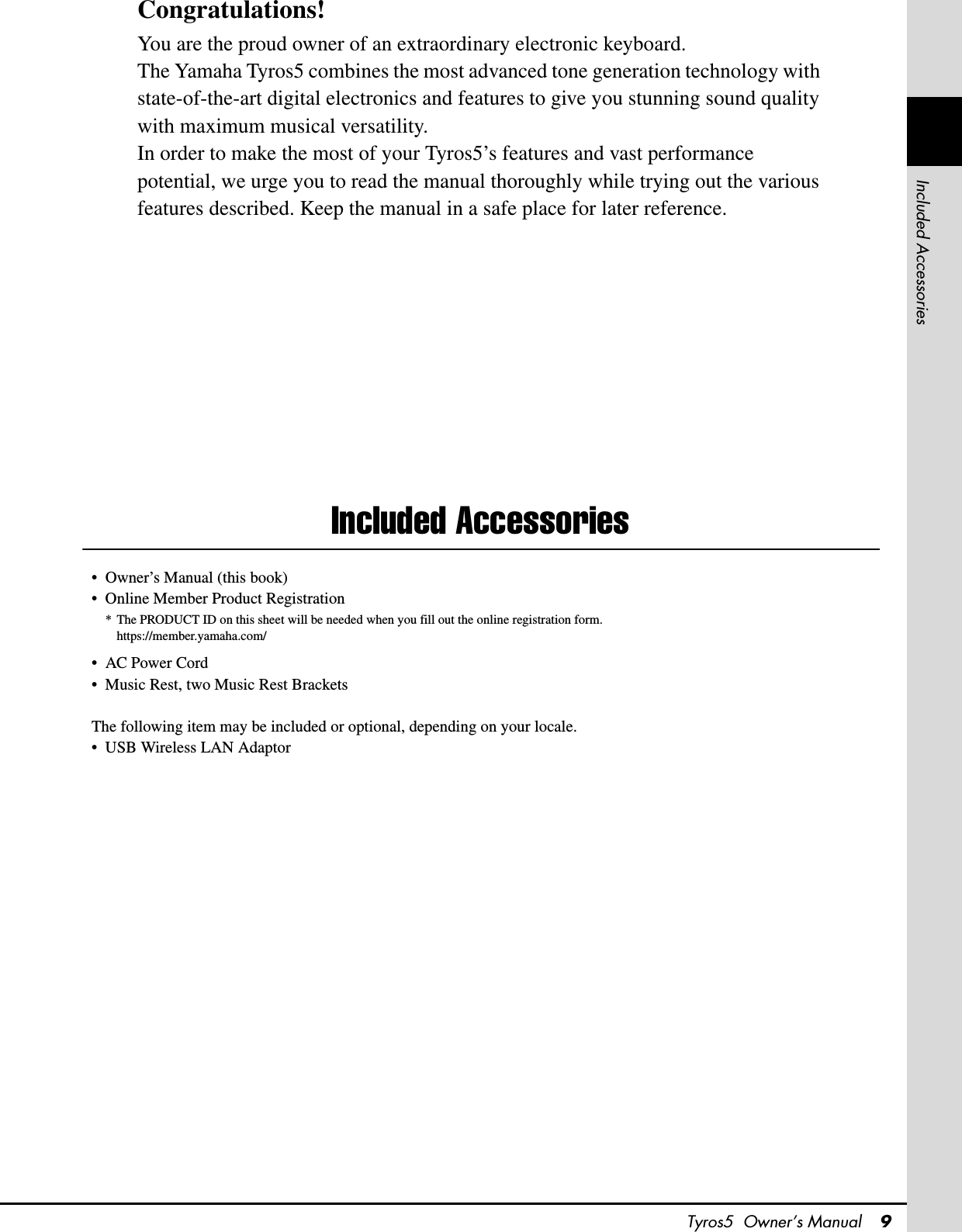
![10 Tyros5 Owner’s ManualAbout the ManualsThis instrument has the following documents and instructional materials.Included DocumentsOwner’s Manual (this book)Provides overall explanations of the Tyros5 basic functions. USB Wireless LAN Adaptor ManualInforms the precautions that you need to read before using the adaptor.Online Materials (Downloadable from the web)Reference Manual (only in English, French and German)Explains advanced features of the instrument, such as creating original Styles, Songs and Multi Pads, and making the settings of specific parameters.Data ListContains various important preset content lists such as Voices, Styles, Effects, as well as MIDI-related infor-mation.iPhone/iPad Connection Manual (??, ??...)Explains how to connect the instrument to smart devices, such as iPhone, iPad, etc.Computer-related Operations (??, ??...)Includes instructions on connecting the instrument to a computer, and operations related to transferring song data.To obtain these materials, access the Yamaha Downloads, enter “Tyros5” to the Model Name box, then click [Search].• Unless indicated otherwise, the illustrations and displays as shown in this manual are based on the 61-key keyboard. These are for instructional purposes only, and may appear somewhat different from those on your instrument.• Windows is a registered trademark of Microsoft® Corporation in the United States and other countries.• iPhone and iPad are trademarks of Apple Inc., registered in the U.S. and other countries.• The company names and product names in this manual are the trademarks or registered trademarks of their respective companies.Yamaha Downloadshttp://download.yamaha.com/](https://usermanual.wiki/Yamaha/UDWL01.Short-Term-Confidential-User-Manual-2/User-Guide-2037897-Page-10.png)
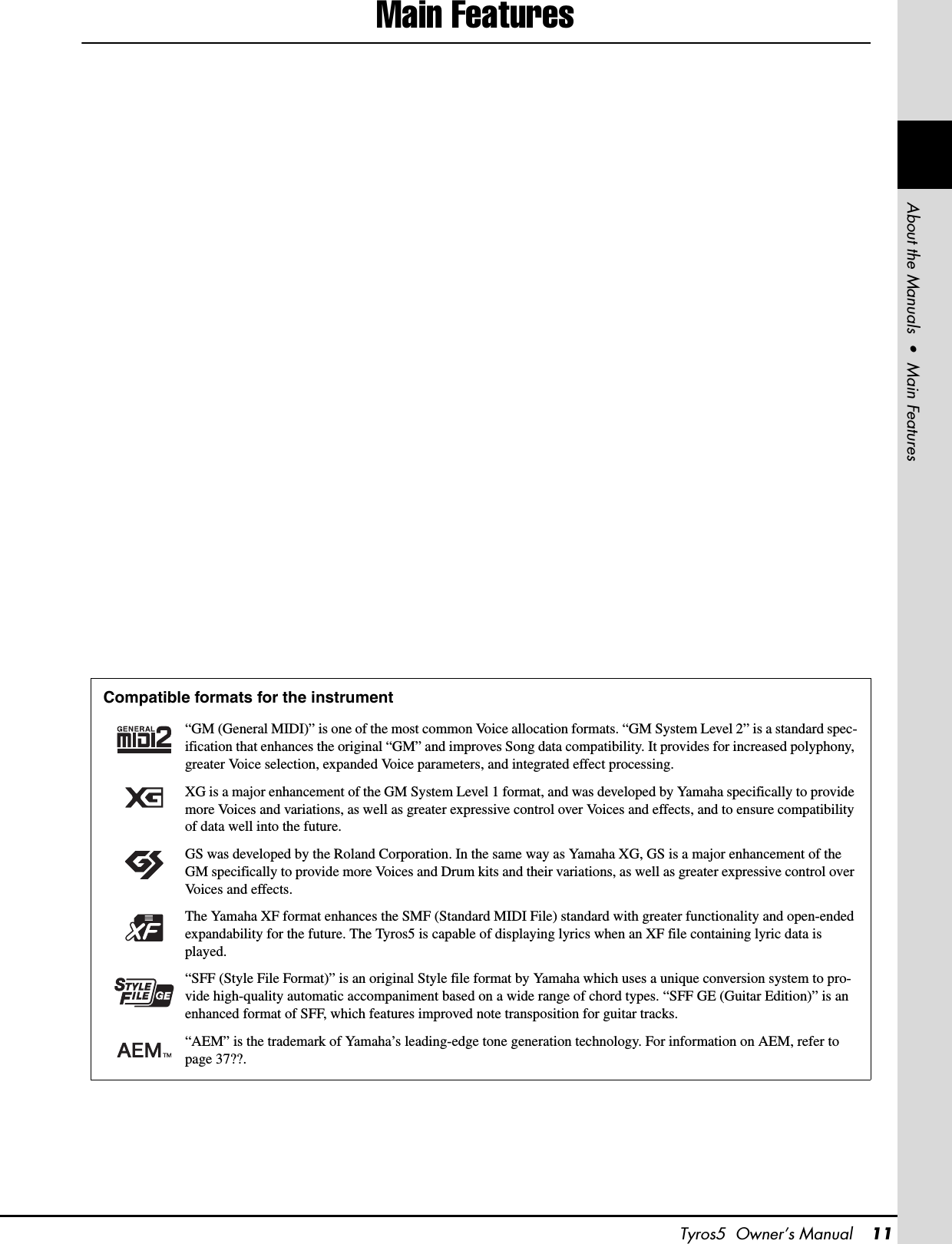
![Tyros5 Owner’s Manual 97111111Connections – Using Your Instrument with Other Devices –Connections– Using Your Instrument with Other Devices –This chapter covers the connectors of this instrument. To see where the connectors are located on the instrument, refer to pages ??–??.By connecting a microphone, you can enjoy singing along with your keyboard performance or with Song playback, as well as recording your vocal performance using the Audio Recorder function. Make sure you have a conventional dynamic microphone. For instructions on connecting a microphone, refer to page ??.Connecting the Optional Yamaha TRS-MS05 SpeakerFor instructions, refer to pages ??–??.Before connecting the instrument to other electronic components, turn off the power of all components. Also, before turning any components on or off, make sure to set all volume levels to minimum (0). Otherwise, dam-age to the components, electrical shock, or even permanent hearing loss may occur.Connecting a Microphone ([MIC INPUT] jack)Connecting Audio Devices (LINE OUT jacks, AUX IN jacks)CAUTIONSince the Tyros5 has no built-in speakers, you need to monitor its sound output via external audio equipment. Alternatively, you could use a pair of headphones (page 15??).IMPORTANT](https://usermanual.wiki/Yamaha/UDWL01.Short-Term-Confidential-User-Manual-2/User-Guide-2037897-Page-12.png)
![98 Tyros5 Owner’s ManualUsing External Audio Devices for PlaybackThe [LINE OUT] jacks are used to send the Tyros5 output to a keyboard amplifier, stereo sound system or mixing console. If you are connecting the Tyros5 to a mono sound sys-tem, use only the [L/L+R] jack. When only this jack is connected (using a standard phone plug), the left and right channels are combined and output through this jack—allowing you have a mono mix of the Tyros5’s stereo sound.You can send a specific part to desired LINE OUT SUB jacks. The operation display can be called up: [MIXING CONSOLE] TAB [][] LINE OUT. For details, refer to the Reference Man-ual on the website.To avoid possible damage, first turn on the power to the instru-ment, then to the external device. When turning off the power, first turn off the power to the external device, then to the instrument. Since this instrument’s power may automatically be turned off due to the Auto Power Off function (page ??), turn off the power to the external device, or disable Auto Power Off when you do not intend to operate the instrument.NOTENOTICEPhone plug(standard)Phone plug(standard)Input jackAudio cablePowered speakersSwitching the role of the LINE OUT SUB [3]–[4] jacks to AUX OUT jacksYou can switch the role of the LINE OUT SUB [3]–[4] jacks to AUX OUT jacks by the instrument’s display called up via [MIXING CONSOLE] TAB [][] LINE OUT. For the details, refer to the Reference Manual on the website.Do not route the output from the AUX OUT jacks to the AUX IN jacks. If you make this connection, the signal input at the AUX IN jacks is output from the AUX OUT jacks. These connections could result in a feedback loop that will make normal performance impossible, and may even damage the equipment.NOTICEThe output volume from AUX OUT jacks cannot be controlled by MASTER VOLUME.NOTE](https://usermanual.wiki/Yamaha/UDWL01.Short-Term-Confidential-User-Manual-2/User-Guide-2037897-Page-13.png)
![Tyros5 Owner’s Manual 9911Connections – Using Your Instrument with Other Devices –Playing External Audio Devices with the Tyros5You can connect the output jacks of an external device (such as CD player, portable audio player, tone generator etc.) to the instrument’s AUX IN [L/L+R]/[R] jacks, letting you hear the sound of that device through the headphones or optional Yamaha TRS-MS05 speaker of the Tyros5.By connecting with an external monitor to the [RGB OUT] terminal of the instrument, the lyrics, text and display on the instrument's LCD can be shown on the monitor.Selecting what is shown on the External MonitorTo do this, called up the display via [FUNCTION] [H] (UTILITY) TAB [][] CONFIG 2 [A]/[B] “1 SCREEN CONTENT,” then use the [5 ]/[6 ] button. When you select “LYRICS/TEXT,” the connected monitor shows the LYRICS or TEXT display regardless of what is shown on the instrument's LCD. When you select “LCD,” the monitor shows display shown on the instrument's LCD.To avoid damage to the devices, first turn on the power to the external device, then to the instrument. When turning off the power, first turn off the power to the instrument, then to the exter-nal device.Use only the [L/L+R] jack for connec-tion with a monaural device.The input signal from the AUX IN jacks is affected by the setting of the instru-ment's [MASTER VOLUME] dial, and the volume balance with other parts such as entire keyboard can be adjusted by the BALANCE display (page ??).NOTICENOTENOTEPhone plug(standard)LINE OUTAudio cableCD player, portable audio player, tone generatorConnecting an External Monitor ([RGB OUT] terminal)If the display is not aligned properly in the computer monitor, change the set-tings on the monitor itself.Avoid looking at the monitor for prolonged periods of time since doing so could damage your eye-sight. Take frequent breaks and focus your eyes on distant objects to avoid eyestrain.NOTECAUTIONMini D-Sub 15-pin](https://usermanual.wiki/Yamaha/UDWL01.Short-Term-Confidential-User-Manual-2/User-Guide-2037897-Page-14.png)
![100 Tyros5 Owner’s ManualOne or two optional Yamaha FC4 or FC5 Footswitches and an optional Yamaha FC7 Foot Controller can be connected to one of these ASSIGNABLE FOOT PEDAL jacks. A foot-switch can be used for switching functions on and off, while a foot controller controls con-tinuous parameter such as volume.With the initial factory settings, each jack features the following function. • 1 (SUSTAIN) ................Controls sustain.• 2 (ART. 1) .....................Controls an articulation effect on a Super Articulation/Super Articulation 2 Voice.• 3 (VOLUME) ...............Controls volume.Moreover, you can change the function assignments to the pedals.Example: Controlling Song Start/Stop by footswitchConnect a footswitch (FC4 or FC5) to one of the ASSIGNABLE FOOT PEDAL jacks. To assign the function to the connected pedal, select “SONG PLAY/PAUSE” in the operation display: [FUNCTION] [D] CONTROLLER TAB [][] FOOT PEDAL.For the functions you can assign to the pedals, refer to the Reference Manual on the web-site.Connecting Footswitches/Foot Controllers (ASSIGNABLE FOOT PEDAL jacks)Do not connect or disconnect the pedal when the power is on.NOTEFC4FC5FC7](https://usermanual.wiki/Yamaha/UDWL01.Short-Term-Confidential-User-Manual-2/User-Guide-2037897-Page-15.png)
![Tyros5 Owner’s Manual 10111Connections – Using Your Instrument with Other Devices –You can connect a USB flash memory or a USB wireless LAN adaptor to the [USB TO DEVICE] terminal. You can save data you’ve created on the instrument to the USB flash memory (page ??), or you can connect the instrument to a smart device such as iPad via wireless LAN (page ???).Connecting USB Devices ([USB TO DEVICE] terminal)Precautions when using the [USB TO DEVICE] terminalWhen connecting a USB device to the terminal, be sure to handle the USB device with care. Follow the important pre-cautions below.Compatible USB devices• USB flash memory• USB wireless LAN adaptor (which is included only in some areas)The instrument does not necessarily support all commer-cially available USB devices. Yamaha cannot guarantee operation of USB devices that you purchase. Before pur-chasing a USB device for use with this instrument, please visit the following web page: http://download.yamaha.com/Connecting USB deviceWhen connecting a USB device to the [USB TO DEVICE] terminal, make sure that the connector on the device is appropriate and that it is connected in the proper direction.Using USB flash memoriesBy connecting the instrument to a USB storage device, you can save data you’ve created to the connected USB flash memory, as well as read data from the connected USB flash memory.Formatting USB flash memoryWhen a USB storage device is connected, a message may appear prompting you to format the USB flash memory. If so, execute the Format operation (page 102).To protect your data (write-protect)To prevent important data from being inadvertently erased, apply the write-protect function provided with each USB flash memory. If you are saving data to the USB storage device, make sure to disable write-protect.Turning off the instrumentWhen turning off the instrument, make sure that the instrument is NOT accessing the USB flash memory by playback/recording or file management (such as during Save, Copy, Delete and Format operations). Failure to do so may corrupt the USB flash memory and the data.For more information about the handling of USB devices, refer to the owner’s manual of the USB device.NOTEOther USB devices such as a computer keyboard or mouse cannot be used.NOTE• Avoid connecting or disconnecting the USB device during play-back/recording, file management (such as Save, Copy, Delete and Format operations) or when accessing the USB device. Failure to do so may result in “freezing” of the operation of the instrument or corruption of the USB device and the data.• When connecting then disconnecting the USB device (and vice versa), make sure to wait a few seconds between the two oper-ations.NOTICEWhen connecting a USB cable, make sure that the length is less than 3 meters.NOTEThe Format operation deletes any previously existing data. Make sure that the USB flash memory you are formatting does not con-tain important data. Proceed with caution, especially when con-necting multiple USB flash memories.NOTICE](https://usermanual.wiki/Yamaha/UDWL01.Short-Term-Confidential-User-Manual-2/User-Guide-2037897-Page-16.png)
![102 Tyros5 Owner’s ManualFormatting a USB Storage Device or Internal Hard Disk DriveTo format a USB storage device or internal hard disk drive, execute the format operation.If you want to format a USB storage device, make sure that a USB storage device is con-nected to the [USB TO DEVICE] terminal beforehand.1Call up the operation display.[FUNCTION] [I] UTILITY TAB [][] MEDIA2Press the [A]/[B] buttons to select the USB storage device or internal hard disk (HD) drive to be formatted from the device list.The indications USB 1, USB 2, etc. will be displayed depending on the number of the connected devices.3Press the [H] (FORMAT) button to execute the Format opera-tion.You can connect a smart device such as an iPhone or iPad to the [USB TO DEVICE] ter-minal of the instrument via the USB wireless LAN adaptor (if included). The USB wire-less LAN adaptor may not be included depending on your locale due to local regulations. If the USB wireless LAN adaptor is not supplied with your instrument, connect the smart?device to the MIDI terminals via the Yamaha i-MX1 (optional) or to the [USB TO HOST] terminal via the Yamaha i-UX1 (optional). By using an application tool on your smart device, you can take advantage of convenient functions and get more enjoyment out of this instrument.For details on connections, refer to the “iPhone/iPad Connection Manual” on the website (page 10).For information about the compatible smart devices and application tools, access the fol-lowing page:http://www.yamaha.com/kbdapps/Yamaha does not guarantee or support use of the included USB wireless LAN adaptor with any devices other than this instrument.The format operation deletes any previously existing data. Make sure that the device you are for-matting does not contain impor-tant data. Proceed with caution, especially when connecting mul-tiple USB flash memories.NOTICE132When the internal hard disk drive is for-matted, the Tyros5 will be restarted automatically.NOTEConnecting to an iPhone/iPad ([USB TO DEVICE], [USB TO HOST] and MIDI terminals)• Before using the [USB TO DEVICE] terminal, be sure to read “Precautions when using the [USB TO DEVICE] terminal” on page ??.• When you use the instrument along with an application on your iPhone/iPad, we recommend that you first set “Airplane Mode” to “ON” then set “Wi-Fi” to “ON” on your iPhone/iPad in order to avoid noise caused by communication.Do not place your iPhone/iPad in an unstable position. Doing so may cause the/ device to fall and result in damage.NOTENOTICE](https://usermanual.wiki/Yamaha/UDWL01.Short-Term-Confidential-User-Manual-2/User-Guide-2037897-Page-17.png)
![Tyros5 Owner’s Manual 10311Connections – Using Your Instrument with Other Devices –By connecting a computer to the [USB TO HOST] terminal, you can transfer data between the Tyros5 and the computer via MIDI. For details on using a computer with this instru-ment, refer to the “Computer-related Operations” on the website.Connecting to a Computer ([USB TO HOST] terminal)Use an AB type USB cable of less than 3 meters. USB 3.0 cables cannot be used.• When using a USB cable to connect the instrument to your computer, make the connection directly without passing through a USB hub.• The instrument will begin transmis-sion a short time after the USB con-nection is made.• For information on setting up your sequence software, refer to the owner’s manual of the relevant soft-ware.• You can also use the MIDI [IN]/[OUT] terminals to connect to a computer. In this case, a USB-MIDI interface (such as the Yamaha UX16) is needed. For more information, refer to the owner’s manual of the USB-MIDI interface.NOTICENOTEA typeUSB cableB type](https://usermanual.wiki/Yamaha/UDWL01.Short-Term-Confidential-User-Manual-2/User-Guide-2037897-Page-18.png)